Mikel Oyarzabal is in a great spot.
At the time of writing, his Real Sociedad side is fifth in the La Liga table, just a point off a Champions League spot. WhoScored.com rates him as the ninth highest-rated performer in the league. He captains the team and his chemistry with Martin Ødegaard has led to the two of them featuring in WhoScored.com’s top 10 La Liga players.
His 2019 featured a Euro U21 title and his first two goals for Spain’s first team in Euro qualifying. Add in that he’s playing in the Basque region, a place he’s called home his whole life, and you find a very happy, yet ambitious young man.
Yet with that success come the suitors.
Manchester City and Bayern Munich have been linked to the Spaniard this season. Leroy Sane seems to be the first domino in the set. Once he makes his move, there should be some clarity on Oyarzabal’s future.
If you haven’t watched Oyarzabal play, don’t let his listing as a left-forward or midfielder fool you. By no means is he a conventional winger. Lacking the explosive qualities of a player like Sane, Oyarzabal is closer to the mould of an Isco or Bernardo. Crafty with the ball at his feet, capable of delivering the killer pass and skilled enough to play centrally or on the wing, Oyarzabal is an unorthodox winger.
In this tactical analysis, we’ll look at how Imanol Alguacil utilises the unique skill-set of his captain with a thorough scout report. Given Oyarzabal doesn’t fit the standard mould of a winger, Alguacil’s tactics depend on him identifying vulnerabilities in the opposition. Through intelligent positioning and movement, as well as his deceptiveness and ability to hit killer passes with a wide variety of techniques, Oyarzabal is rightly on the radar of Europe’s elites.
Intelligent positioning and movement
Positioning and movement are where Oyarzabal separates himself from the pack. Since he’s more of a nominal winger with second striker freedoms, Oyarzabal is free to drift across the top line to attack the opponent’s vulnerabilities.
Typically allowing his outside-back to provide the team’s width, Oyarzabal prefers to drift into the left half-space. From there, he has more freedom to combine with nearby teammates, pick out dangerous passes with minimal needed for the flight of the ball or take a shot. Though he’s not your standard winger, he’s actually a quality dribbler, winning 48% of his dribbling duels. He doesn’t have the pace to outrun an opponent on the wings, but he’s more than capable of beating a man and immediately connecting with a teammate. That suits his more central positioning very well. An added advantage is that Oyarzabal can keep the defender at least partially committed to defending the pass, pinning him in a poor position before winning the dribble. Whereas a wide starting point limits passing options, Oyarzabal excels when he has options and prevents the opponent from focusing on defending one action.
Real Sociedad’s attack tends to be direct and central while mostly using short and intermediate passes to progress up the field. That’s one of the reasons Oyarzabal plays that nominal winger role. The other is more pragmatic, as they need someone to help defend the wings. Tracking back and helping defend is one of his strongest traits. If you pay attention to his starting points and positional relationship to the ball, you’ll see that he often drops deep to defend and help his teammates beat the press. Even when defending, you’ll often see him defend as close to the half-space as possible while fulfilling his wing responsibilities.
When Oyarzabal receives in the half-spaces, you notice his movement off the ball. He’s exceptional at combining with teammates and using short, quick movements to break a line. Additionally, he reads the movements of his teammates very well. As they move and create pockets of space, he’s generally ready to make a run into that space they’ve created. He leads the team with 2.2 shots per game and seven goals. He’s also tied for second on the team with four assists. La Real benefit from his vision and creativity high up the pitch.
Below are two examples of Oyarzabal’s positioning and movement trends. You’ll notice he’s not on the left-wing. Rather, Real Sociedad has a compact attacking shape and Oyarzabal plays a major role in connecting the attack.
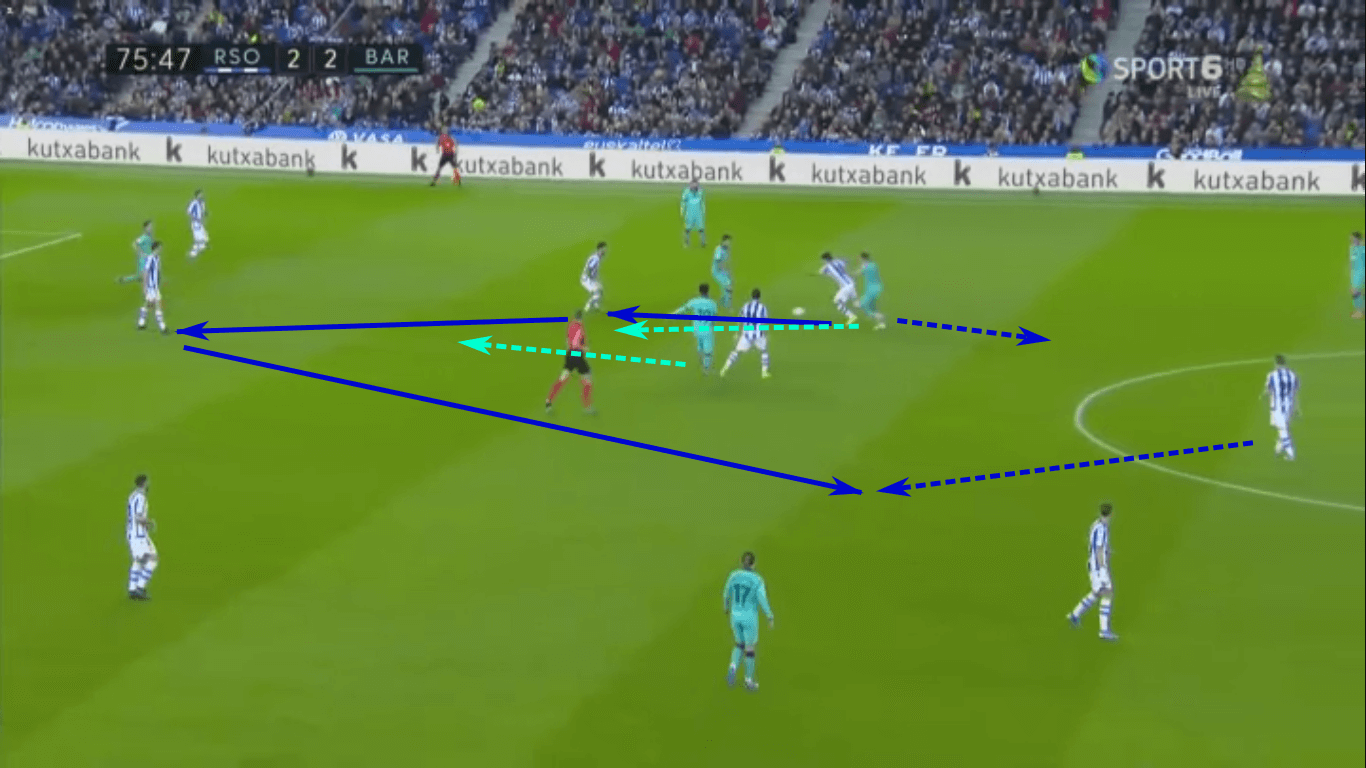
After backtracking and putting in a tackle, Oyarzabal was able to poke the ball to his teammate for the first of two negative passes to escape Barcelona’s counterpressing. Once he released the pass, Oyarzabal pulled himself out of the play to move behind that cluster of defenders. Seeing the sequence unfold, Ødegaard checked into a better pocket of space to allow for the progressive pass.
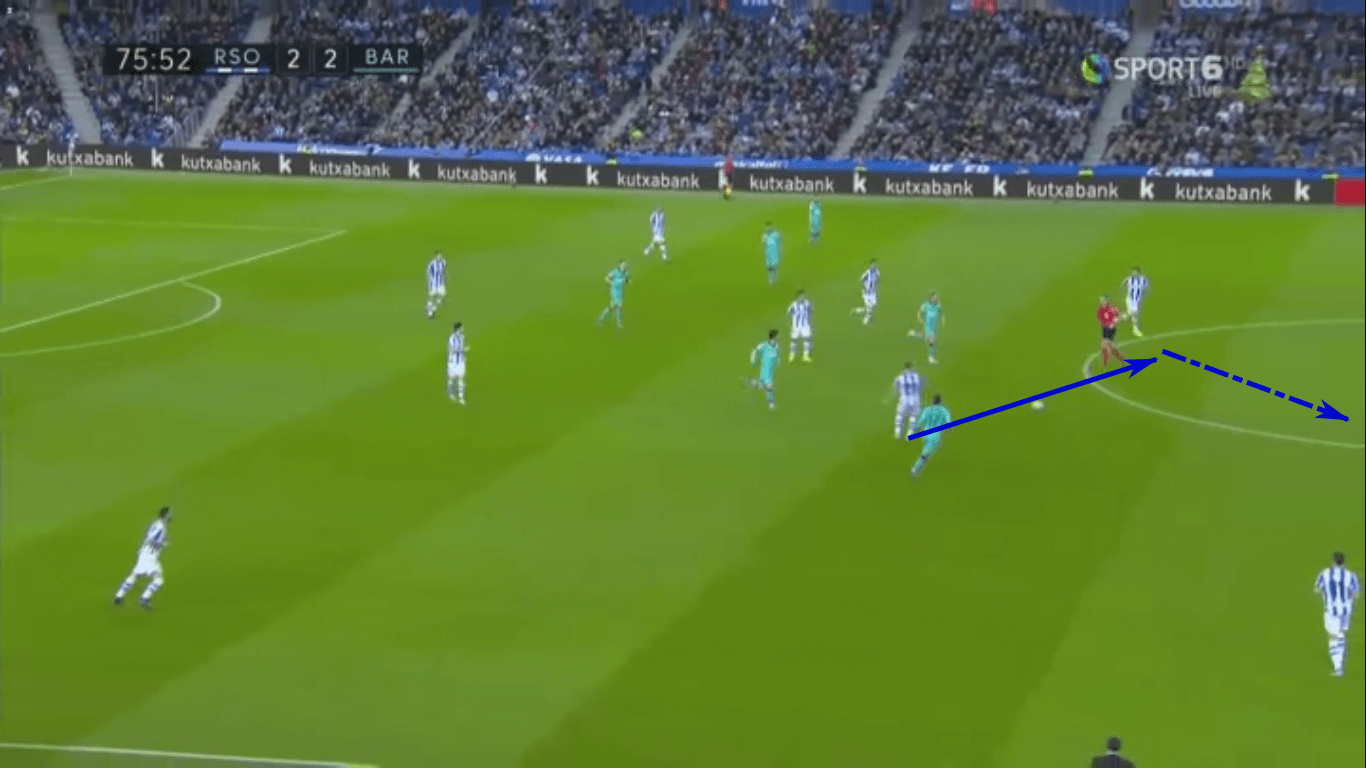
With the pass en route to Ødegaard, Barcelona players closed down to deny the Norwegian time and space to pick out a dangerous ball. In doing so, more space became available to Oyarzabal. Ødegaard’s first touch pass played Oyarzabal into space, allowing him to run at the backline.
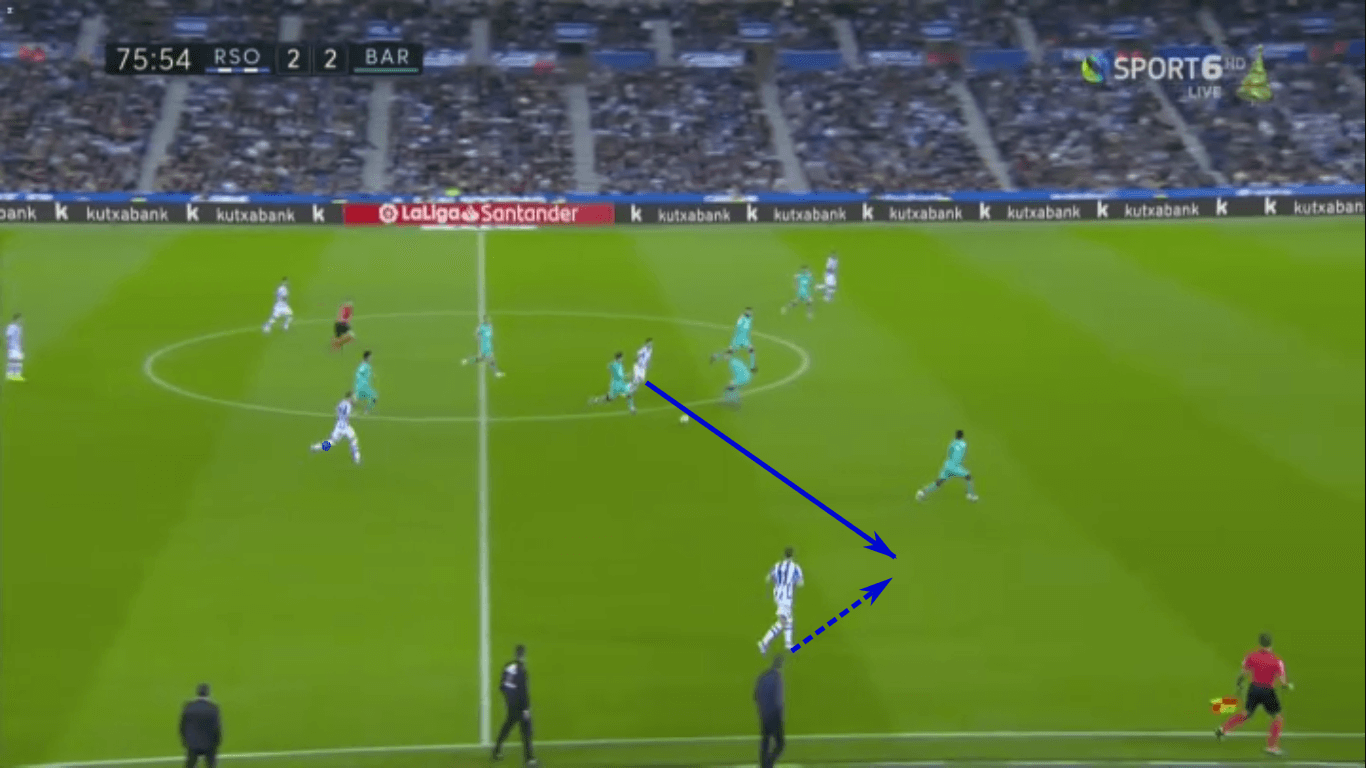
Oyarzabal pinned Clément Lenglet, forcing Nelson Semedo to move centrally to cover for the Frenchman. With Semedo leaving the wing, Oyarzabal played wide to Adnan Januzaj. The outcome is fairly simple for Oyarzabal, but his actions create time and space for his team-mate, increasing the odds of a successful action.
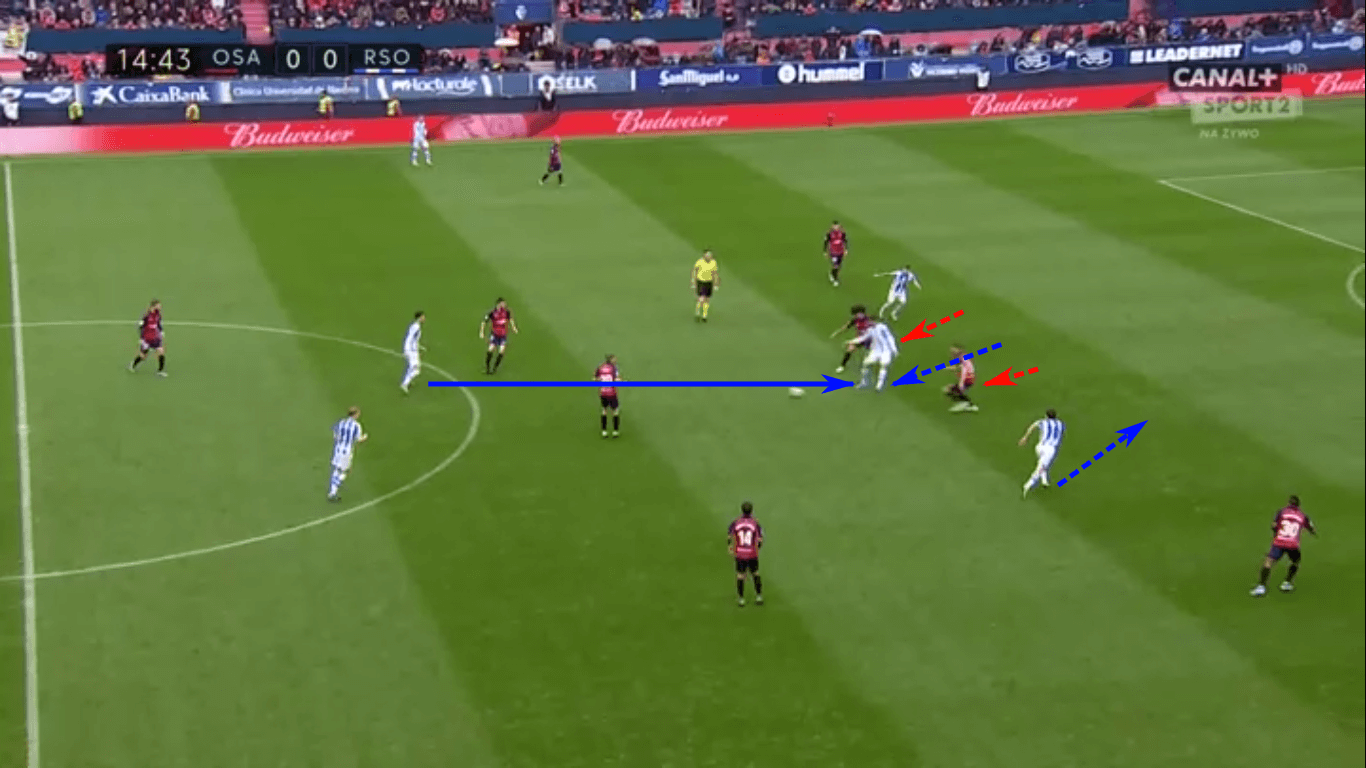
Against Osasuna, Willian José occupied the two centre-backs. He checked towards Mikel Merino, pulling both central defenders higher up than the wide defenders. Oyarzabal made the run into that space, hoping for a through ball or chip over the top. Though he didn’t receive the ball right away, Oyarzabal was unmarked in a dangerous area. Rather than moving into a less dangerous area where he could receive right away, he stayed in that gap between the left-centre and left-backs, trusting his teammates to manage the pressure and deliver the ball to him in that threatening area of the pitch.
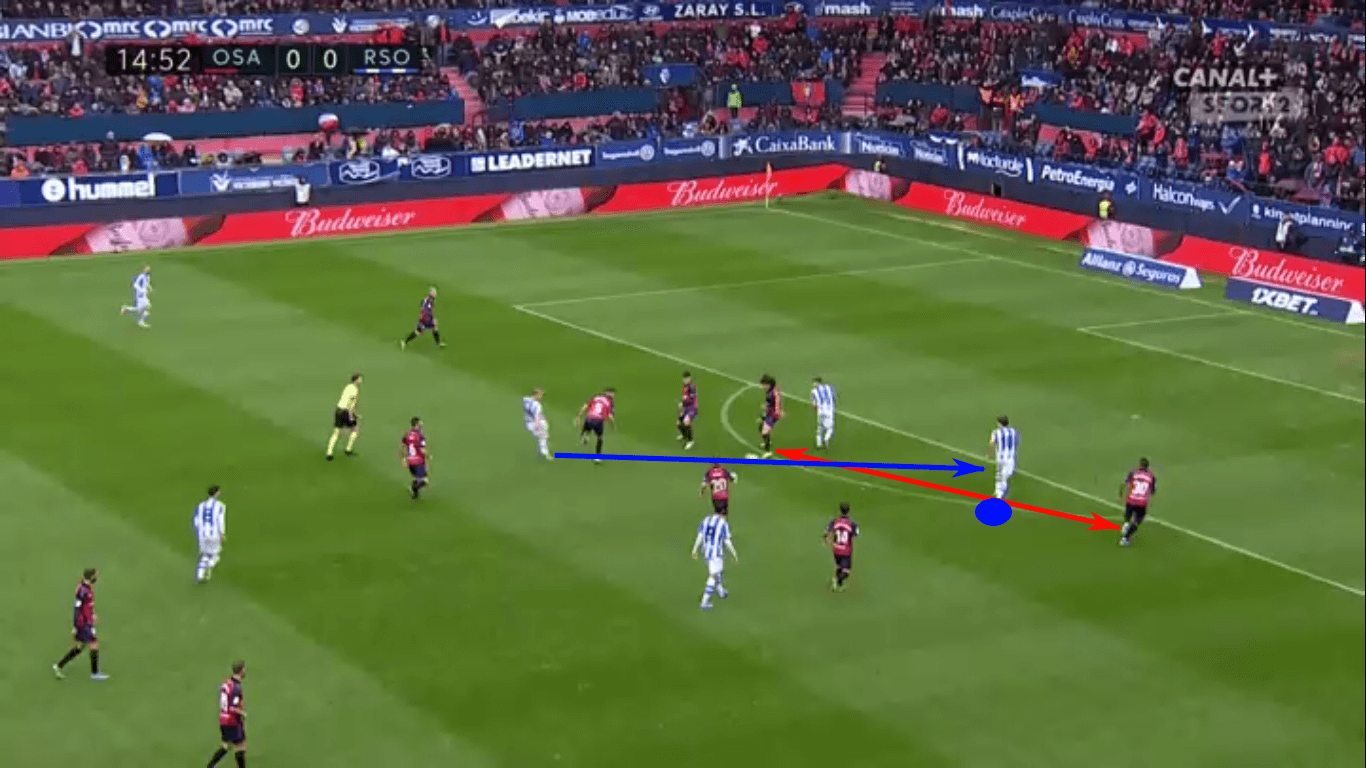
Ødegaard worked his magic, playing a give and go with Merino to beat Darko Brasnac, then engaged David Garcia and pulled him away from Oyarzabal. After a couple touches on the dribble, Ødegaard had his passing lane and played a perfect ball to the patient and disciplined Oyarzabal. A great first touch took Oyarzabal to the penalty spot and the second touch gave La Real the lead.
Passing prowess
It might sound odd to laud the passing ability of a guy with a 75% pass success rate. Dig a little deeper and you’ll see that, in addition to taking more risks, he plays in a very compact, counter-attacking team. By virtue of the way La Real play, the playmakers are asked to take the high-risk high-reward plays. Even the slick passing Ødegaard only ranks 60th in La Liga in passing percentage.
Ødegaard ranks first in the league with 2.8 key passes a game. Next on Real Sociedad is Oyarzabal with 1.5, which is good enough for a top 25 status in the league. In terms of his production higher up the pitch, Oyarzabal owns modest numbers. For passes into the final third, he sits at a 68% completion percentage. Passes into the box come out to a mere 55%. That last stat is massively different than his numbers with Spain. In 2019, Oyarzabal completed eight of his 11 passes into the box, good for a 73% success rate.
While Oyarzabal’s overall passing numbers are low and could certainly use improving, it is directly tied to his tactical role with Real Sociedad. For Spain, he owns an 83% pass completion in 2019. Still not great, but you have to factor in that he’s playing in a very different system with different tactical responsibilities. Plus, he has operated at the left, centre and right forward positions for the national side.
After studying Oyarzabal’s performances, I’m convinced the numbers don’t tell the whole story. His vision to locate the threatening runs of his teammates and the ability to deliver a quality ball under difficult circumstances make him a top player in La Liga. Choosing the correct striking technique to deliver the pass comes naturally to Oyarzabal. He doesn’t need additional time to set up his strike. Rather, the choice of delivery is the product of the conditions of the game.
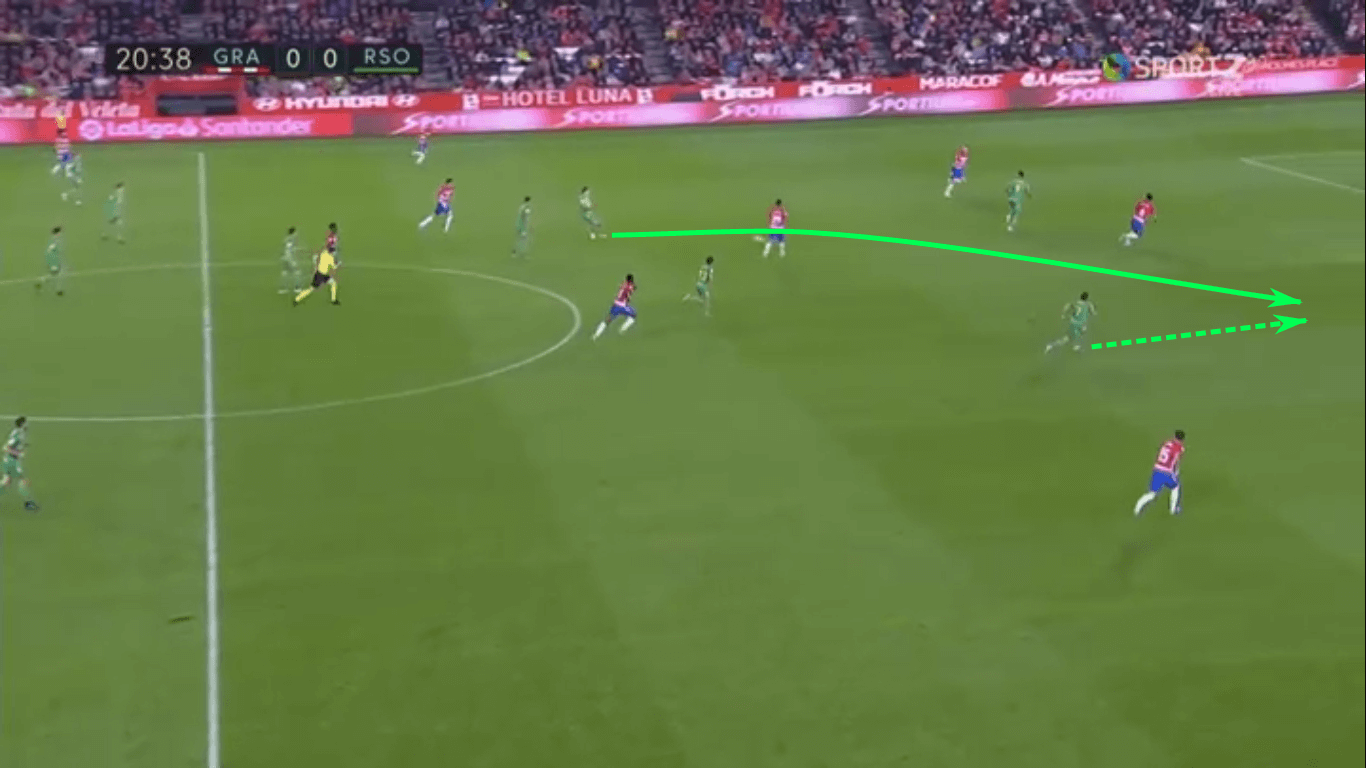
After intercepting a Germán Sánchez pass, Oyarzabal noticed Grenada’s poor backline shape and spotted the run of Portu. He bent a perfect ball between the first defender and his cover, which played his teammate in on goal for the first score of the game.
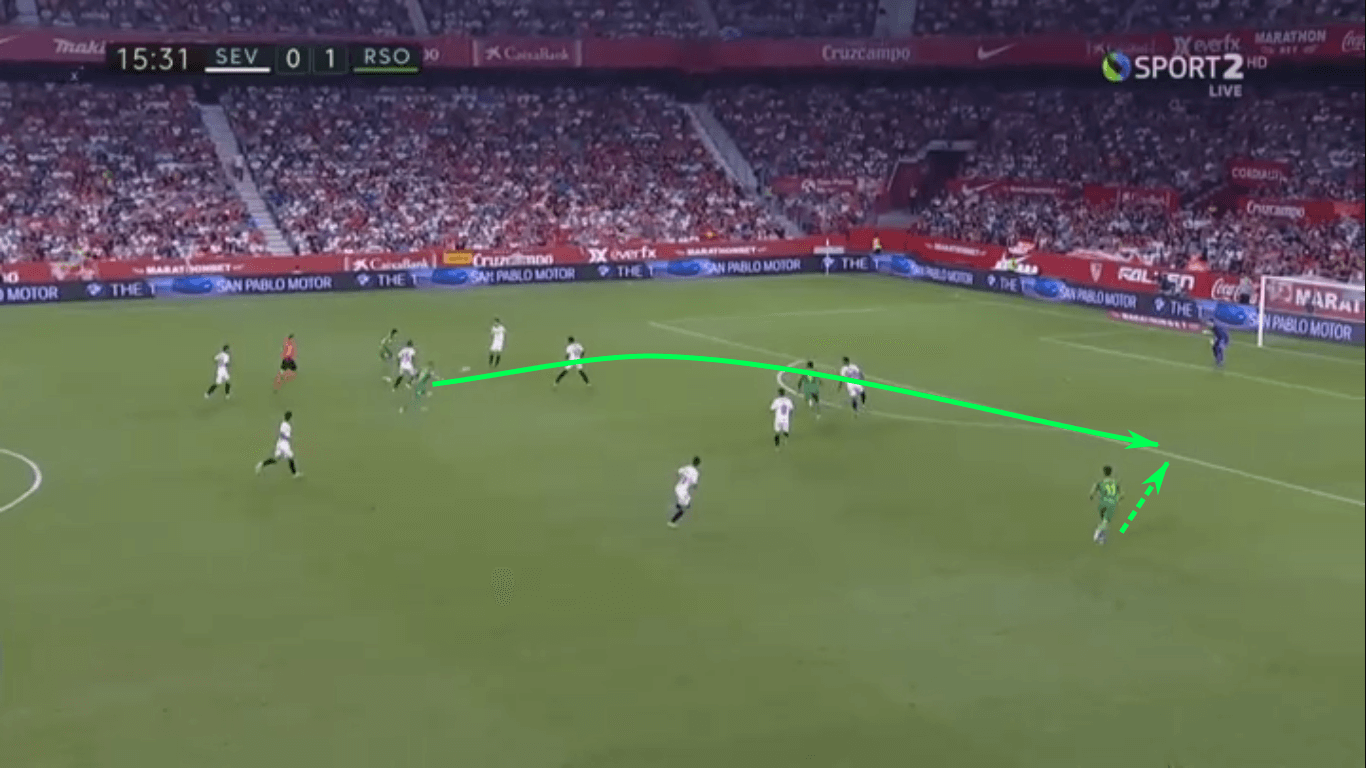
Against Sevilla, Oyarzabal was surrounded by three opponents with back pressure on the way. His immediate options were smothered by defenders, so Oyarzabal attempted the high-risk high-reward pass to Januzaj. His bent pass split first and second defenders, then the two centre-backs as well. Januzaj couldn’t have asked for a better ball. A decent first touch would have set him in on goal, but he made a mess of it and turned the ball over with his pass. Still, credit to Oyarzabal for picking out and delivering that pass.
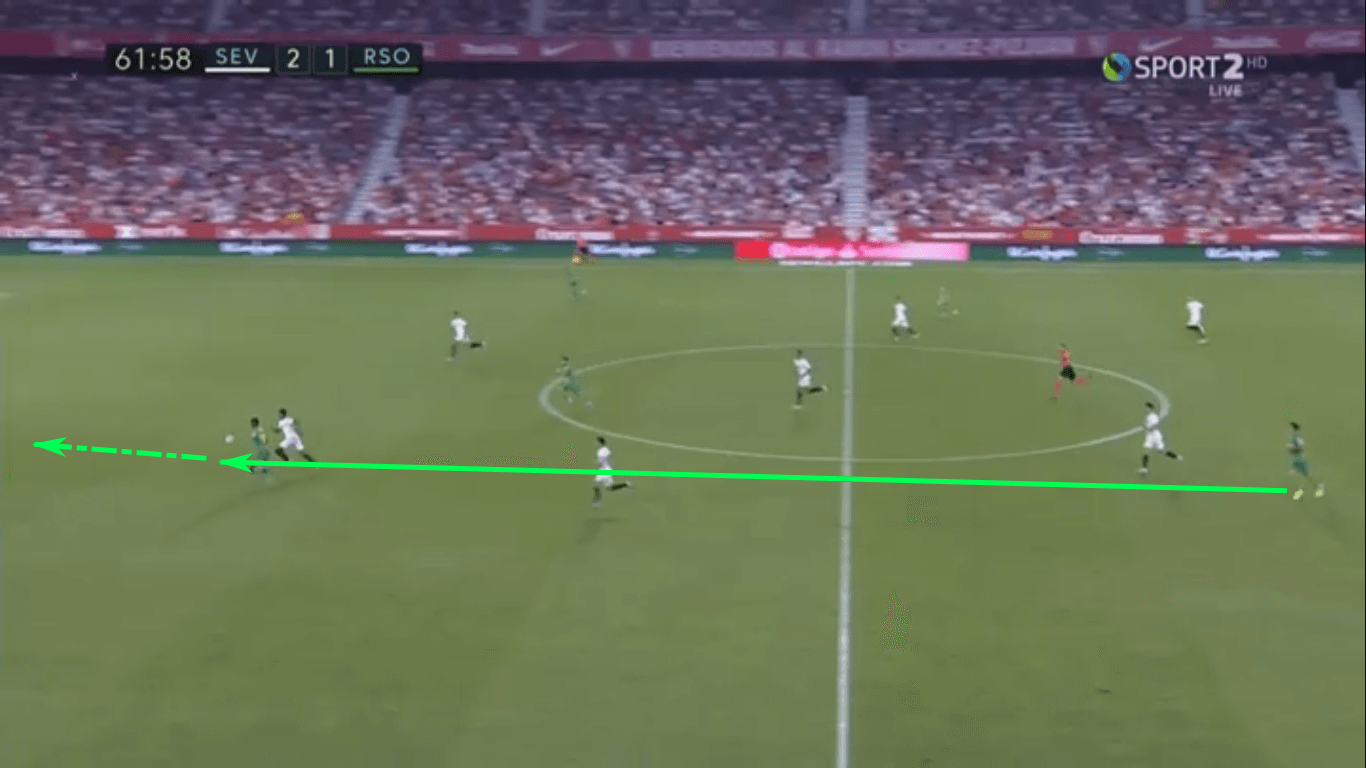
After Real Sociedad intercepted a central pass, the ball was played to Oyarzabal, who was pressured immediately. Oyarzabal did well to shield the ball from his opponent and scan the field for options. Once he picked out the run of Alexander Isak, Oyarzabal took a prep touch that released him from the shoulder charge of his defender and then bent a ball right between Isak and Jules Koundé. The pass is right into Isak’s path, but the forward took a poor first touch in an attempt to keep the ball on his stronger right foot. Had he pushed the ball to his left foot, he would have created distance between the ball and defender, as well as giving himself an easier path to goal. Instead, the first touch took his path in front of the defender (not the worst idea), but the difficulty of the touch led to the ball rolling to the keeper, who was already high in his box to contest the possible breakaway shot.
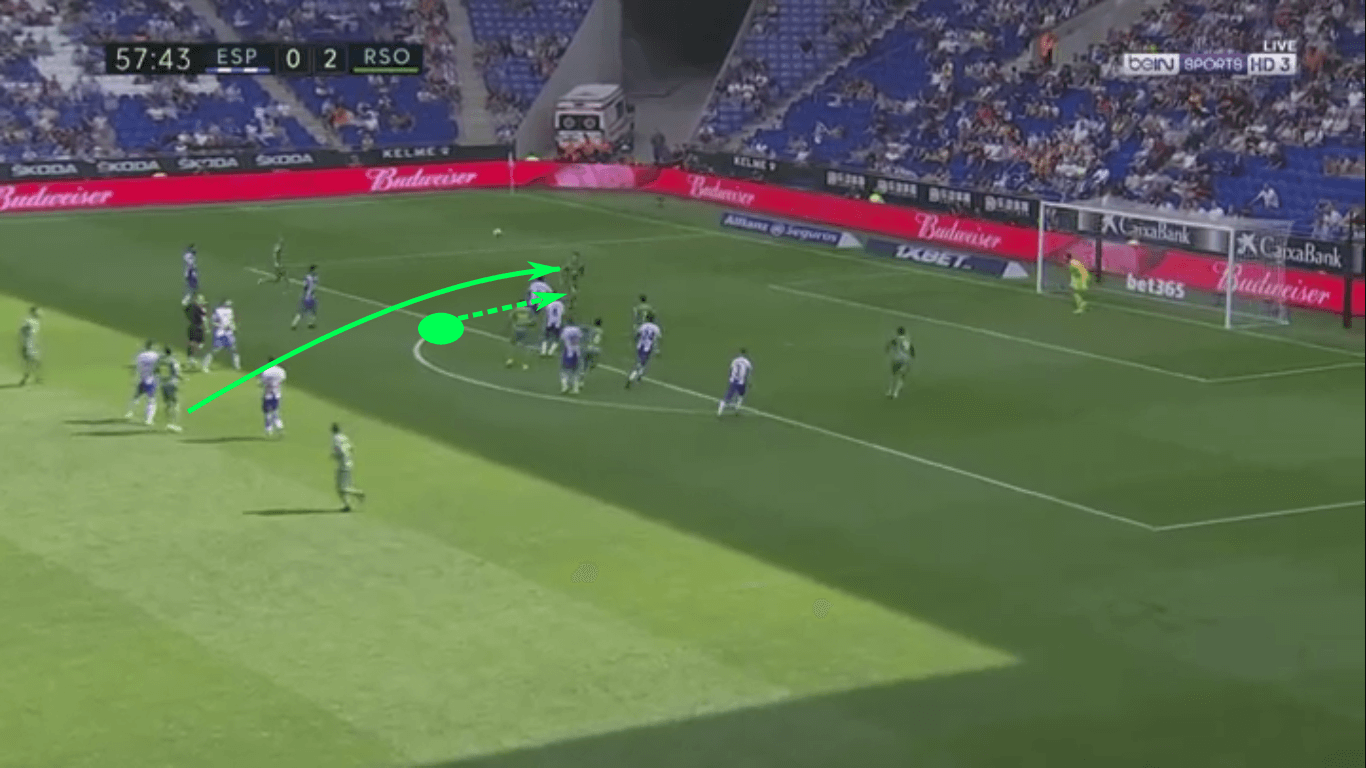
backs touch and sent the chest trap right back into pressure. Holding his hands to his head, he knew he should have done better.
Deceptiveness
If you’ve learned anything from this article, it’s that Oyarzabal is more of a second striker than a conventional winger. Rather than overpowering an opponent on the wing, you’ll likely see Oyarzabal combining with teammates from the half-space before making a central run to set up a shot on goal. The way he approaches the game resembles a creative central playmaker more so than a winger.
Like all great playmakers who earn their living high up the pitch, Oyarzabal adds an element of deception to his game that’s in keeping with his creative playmaker skillset. He’s exceptional at pinning defenders, playing in tight spaces and getting opponents to bite at the wrong time. Oyarzabal is world-class at using deception to create the space he wants to attack. Whether he has the ball at his feet or it’s en route to him, you’ll see the Spaniard using his positioning, movement, body orientation and eyes to move the opponent, guiding the opponent to clear the preferred path.
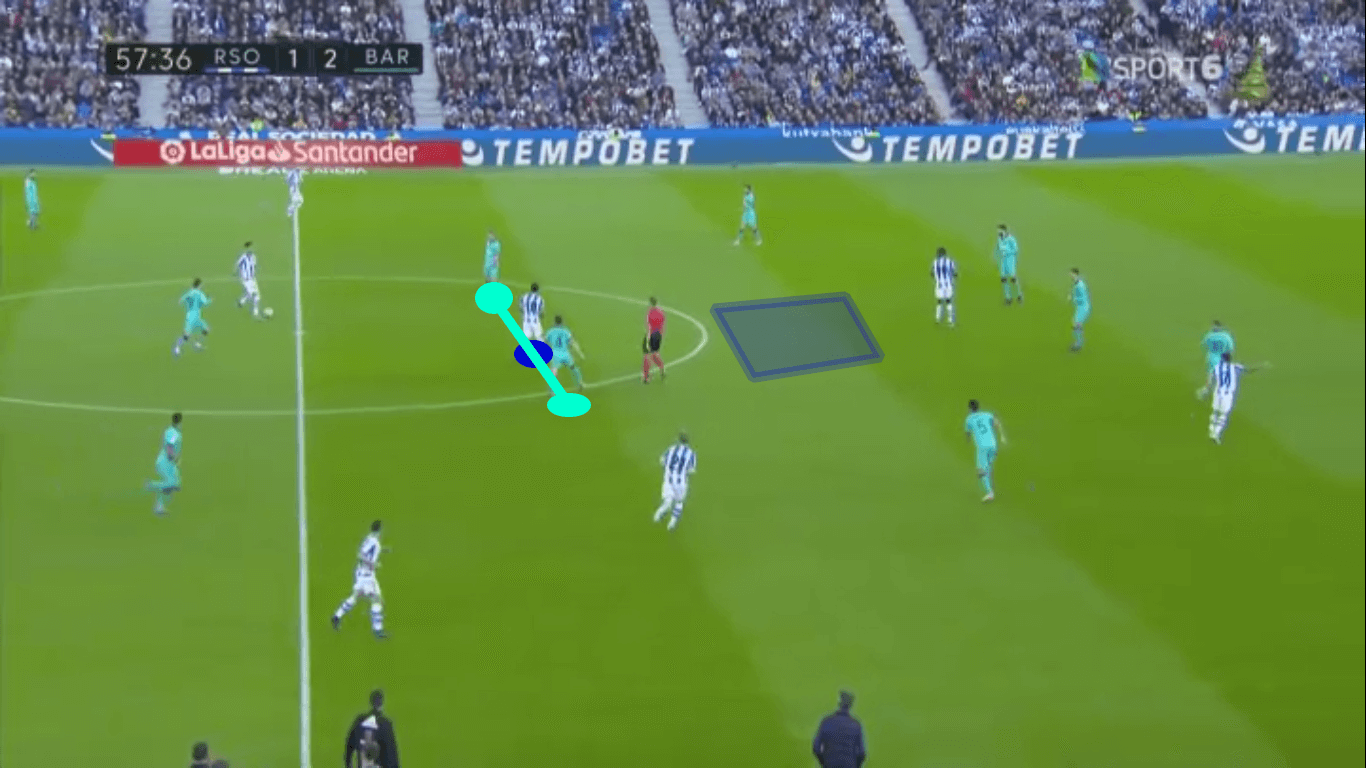
At first glance, you’re probably thinking Oyarzabal’s positioning is poor in this situation. Objectively speaking, he’s not helping himself in this situation as he really could push higher up the field into that blue box. Standing in line with De Jong and Rakitic allowed the Barcelona midfielders to keep him in view. One thing you’ll surely notice is that, despite less than ideal positioning, Oyarzabal’s body orientation is spot on.
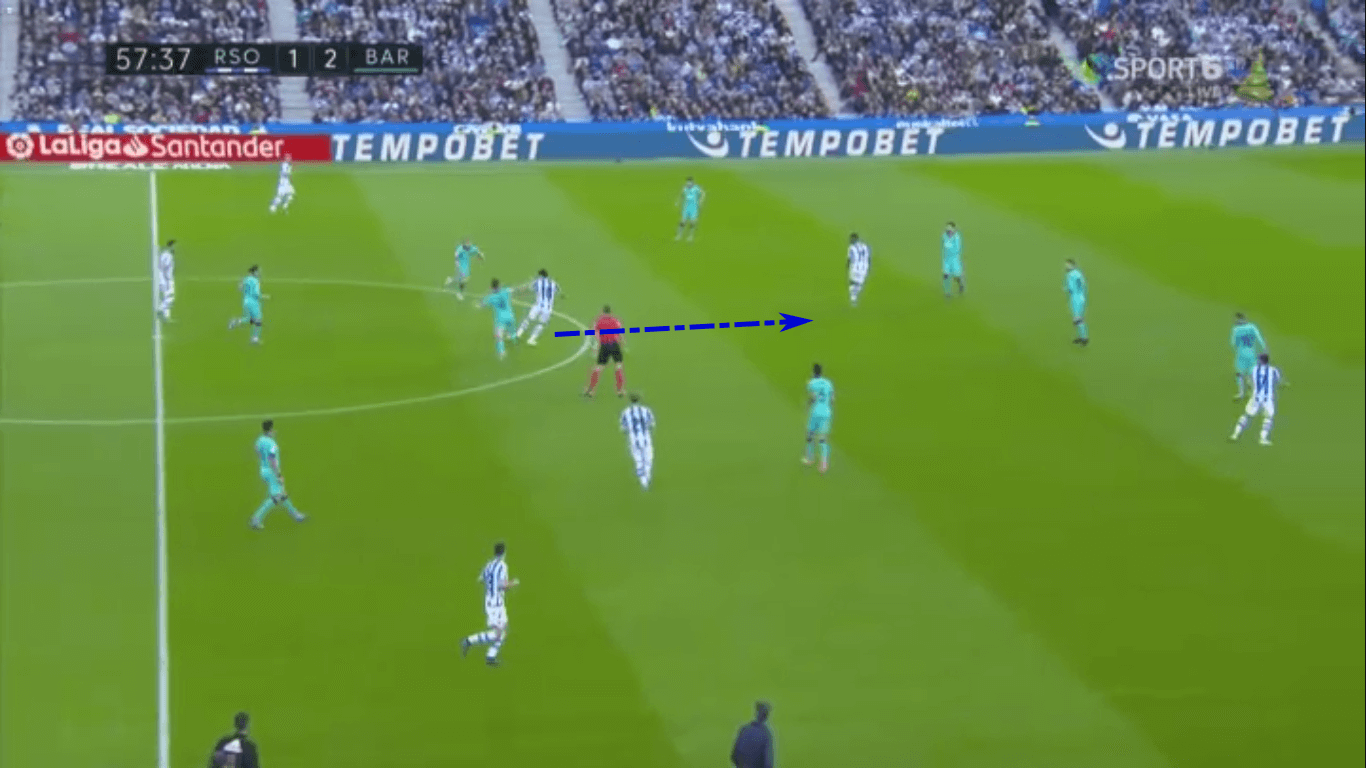
The pass is sent to his front foot, which is just enough to get Rakitic to bite on the attempted interception. Once he knew Rakitic was committed to the tackle, Oyarzabal stood his ground for a moment, then extended his left foot to pull the ball just out of Rakitic’s path, allowing the Spaniard to run at the backline.
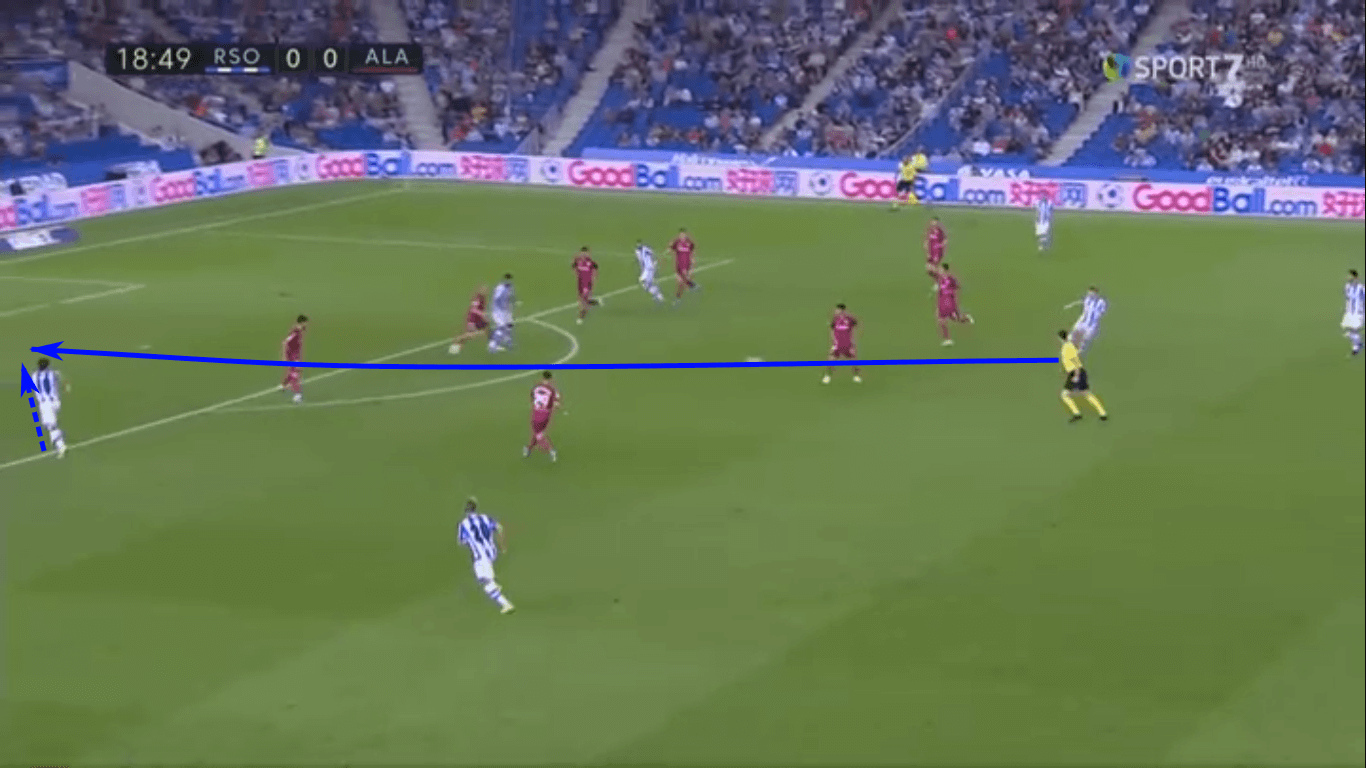
In this play against Deportivo Alaves, Ødegaard rightly earned top credit for this extraordinary through ball, but let’s examine Oyarzabal’s role in the play. The captain did well to position himself wide enough to lose the attention of his opponent while also remaining central enough to attack the goal.
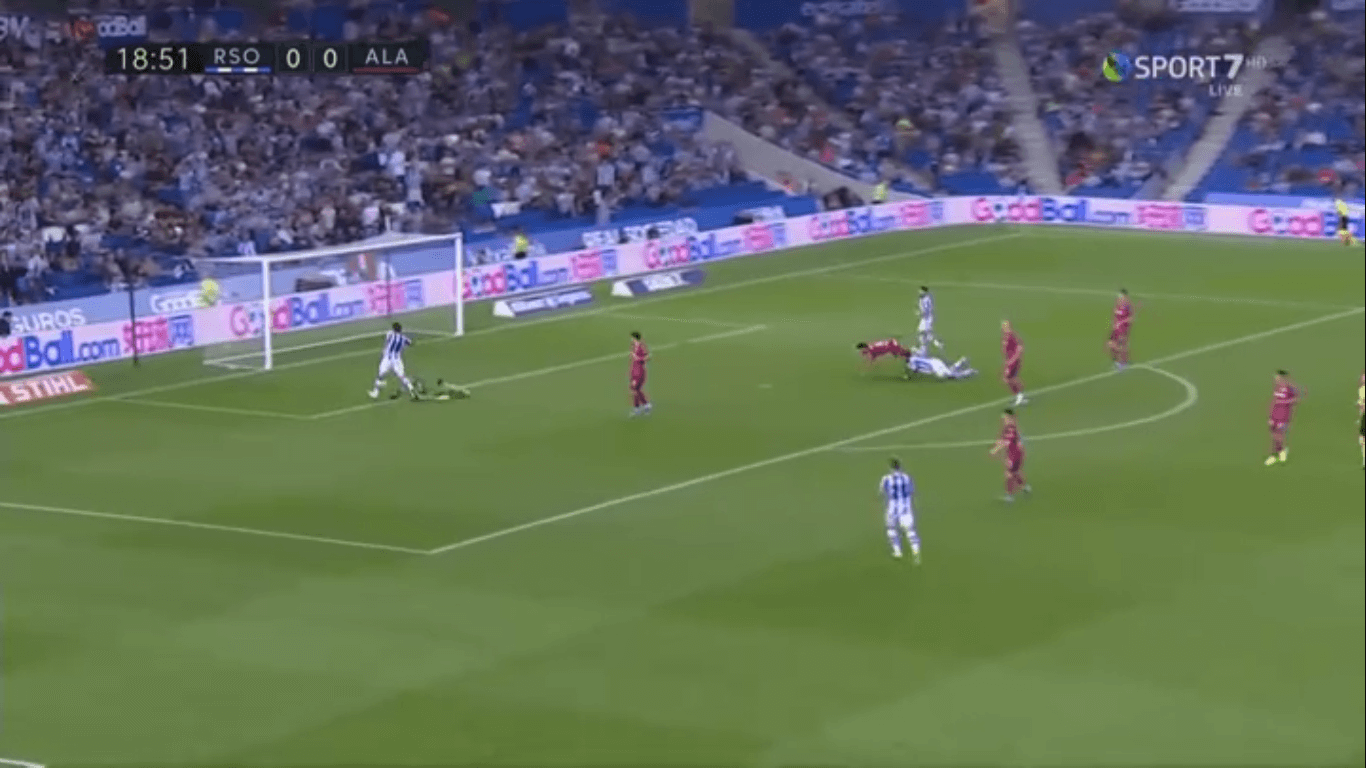
His horizontal run was timed perfectly. As he arrived at the end of the pass, Fernando Pacheco was in an awkward spot, unable to grab the pass and only positioned to face a shot. This is where Oyarzabal’s ability to deceive the opponent really comes to the forefront. Rather than taking the right-footed shot as expected, Oyarzabal cleverly let the ball continue on to his left foot. The shocked Pacheco was only able to watch Oyarzabal dance by him and finish in the empty net. Credit Ødegaard for the phenomenal pass, but also Oyarzabal for this bit of deception and improvisation.
Weaknesses
Pace
Taking a look at the global game, you’ll find that wing players tend to be the best athletes on their teams. A common tactical principle is to get your athletes in space, which is more available in the wide areas. Having a pacey dribbler in the middle of the field will simply prevent them from reaching full speed and limit the team’s ability to progress upfield.
Oyarzabal is not your typical wide forward with blazing speed. It’s not that he’s slow, but he is very average in that department and won’t beat many defenders in a footrace. He’s more magician than sprinter. That’s where Real Sociedad’s direct play is perfectly suited for his skill-set.
Since La Real plays direct as often as possible, they look to attack centrally, decreasing the distance to goal and reducing the necessary time to produce a shot. Most of their passes are intermediate-range, putting the ball at the feet of their playmakers, preferably allowing them to run at the backline. Oyarzabal excels in these situations, countering his lack of pace with his intelligence and dribbling ability to pin defenders, which creates running lanes for teammates. Using the dribble to open up the pass allows his teammates to utilize their skill-sets in better numerical situations.
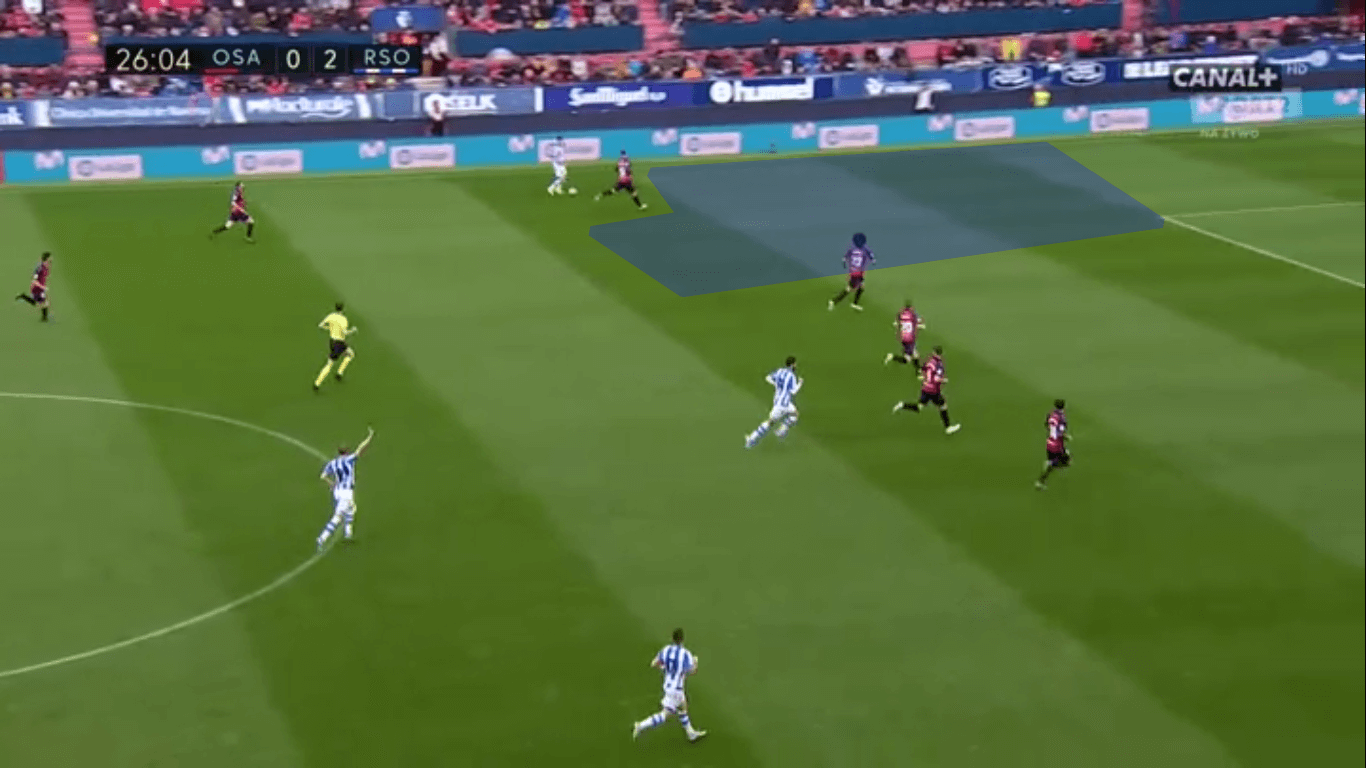
Here you can see that Oyarzabal is in a great position to go 1v1. He’s isolated on the wings with his defender, with loads of space to take the line or cut inside. Rather than taking on his defender, Oyarzabal put his foot on the ball and played negative. If he had taken on and beaten the first defender, he would have drawn out the second defender, leaving his teammates 3v3 centrally.
Crosses
Despite his phenomenal passing ability, Oyarzabal is more of a hit and hope type crosser of the ball. His poor results (23% success rate) and typically narrow positioning are two reasons why he attempts so few crosses per game.
While poor crossing hasn’t hurt him at Real Sociedad, it may limit his ability to stay on the left-wing when, not if, a transfer occurs. Between his lack of top-end pace and crossing woes, a move to a second-striker or central attacking midfield role could work well for the Spaniard.
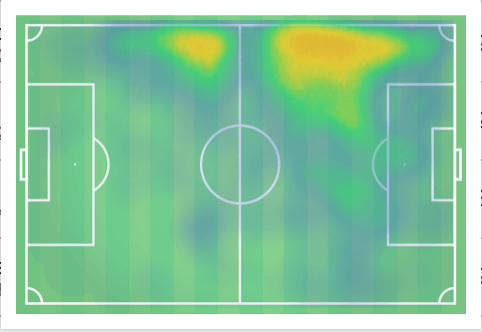
You could argue that his current left-forward/midfield role is nominal and that he’s already playing a second striker role. While his heat map shows that he typically operates in the left-wing, you’ve probably noticed that most of his significant attacking contributions occur in the half-spaces and central channel. Often he starts on the left-wing due to defensive responsibilities, an aspect of his game that he takes very seriously. However, when Real Sociedad is ready to attack the opponent and goal, look for Oyarzabal to move into the left half-space either create or get himself in on goal.
Shot selection
In four and a half professional seasons, Oyarzabal has scored one goal in 64 attempts from outside the box. Many of those attempts give the impression of a forced shot culminating in a block. Of the shots that weren’t blocked, there’s a fairly even distribution of missed and saved shots. Watching footage of his 2019/20 shots, the shots that missed the target tended to be howlers, 20 rows up. Of those that made it to goal, they were little more than routine saves for the keeper, lacking the necessary power to beat the goalie.
With 40 career goals, Oyarzabal is an accomplished finisher. At the time of writing, he and José lead the team with seven goals apiece. Oyarzabal is the team’s penalty kick taker, so going three for three from the spot certainly helps his tally. When he shoots from in the box, he is generally able to find pockets of space to take a quality shot. If he can continue developing his confidence and heading, expect more goals in his future.
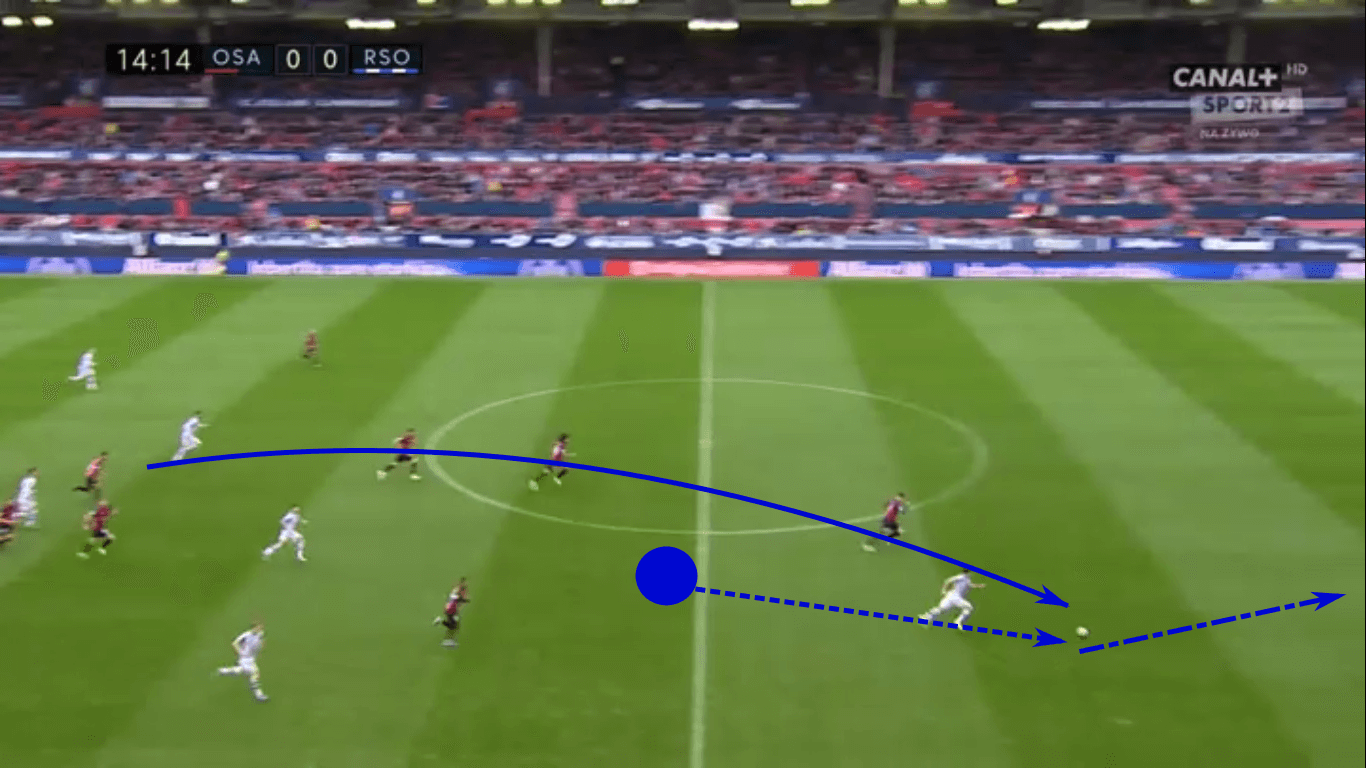
Here you can see the lack of breakaway speed. Still, Oyarzabal managed to time his run perfectly and run unopposed until he reached the box.
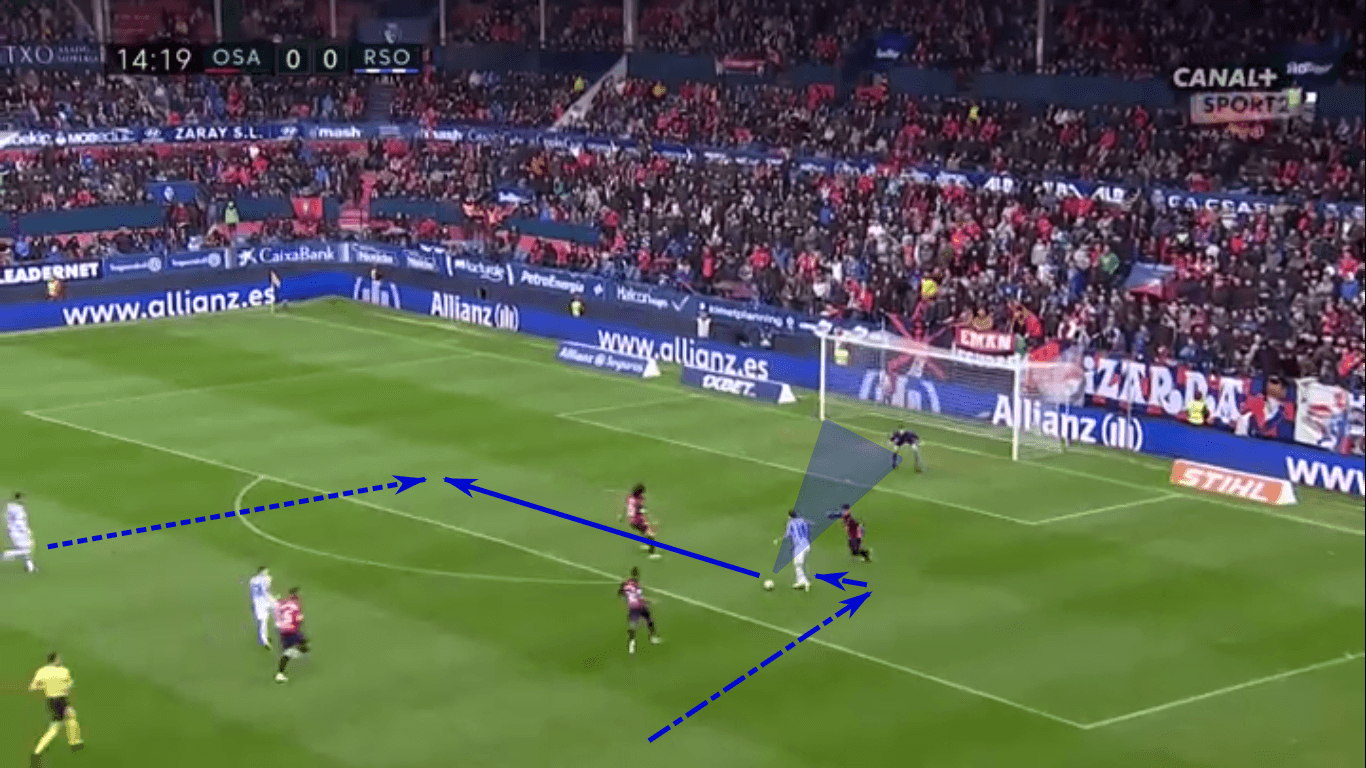
He set up his move perfectly, driving to the near post and faking the right-footed shot to get his defender to lunge in and clear space to the left. As the defender bit, Oyarzabal cut back to his favoured left foot and had a clear shooting lane from roughly 15 metres. If you draw a straight line from the ball to the centre of the goal, the goalkeeper, Sergio Herrera, is just off that line to Oyarzabal’s right. That means Oyarzabal had an opportunity to shoot into the entire far half of the goal. Rather than taking his chance, he played the oncoming run of José whose shot was blocked. Fortunately for Oyarzabal, he made reparation for his lack of selfishness by finishing about 30 seconds later which was discussed in the positioning and movement section of this analysis.
Tries to do too much at times
In WhoScored.com’s “Bad Control Per Game” statistic, Oyarzabal is tied for second in La Liga with 3.1 poorly controlled balls per game. He’s a very technical player, so that stat is shocking at first. When you watch his turnovers, they’re generally a case of trying to do too much. As gifted and influential a player as he is for La Real, Oyarzabal will occasionally spurn simpler options for the killer play.
At Real Sociedad, that’s fine. As one of their top two creators, he has the freedom to go for the high-risk high-reward play. Should he join Europe’s elite in the near future, this is an approach he’ll have to reduce.
Conclusion
Rumours of transfers to Manchester City and Bayern Munich have circulated for months. He has a reported €75 million (£63.5m) release clause. Real Sociedad is unlikely to settle for anything less and have expressed a strong desire to hold onto their captain. A future move could hinge on Sane’s potential move from Manchester City to Bayern Munich. If Sané stays at City, Bayern are rumoured to have Oyarzabal as their plan B. If Sane leaves for Bayern, reports note that City could look to reinvest the funds in the Spaniard.
Regardless of Oyarzabal’s career path, he’s in a great situation at the Anoeta Stadium, playing less than an hour from his hometown of Eibar. Plus, he fits the team’s style of play really well. Alguacil has given Oyarzabal the freedom to drift in from the wing to operate as a second striker, allowing the captain to fill a playmaking role rather than that of an out-and-out winger, which doesn’t fit his player profile.
At just 22 years old, he’s an unfinished product and will surely need some time to adapt to the possession-based attacking of Spain and his future European elite club side. That said, he has the playmaking ability that’s worth the large investment required to sign him away from Real Sociedad. A big second half of the league season, helping La Real return to continental play, would only enhance his reputation and increase the likelihood that he’ll feature for Spain at Euro 2020.





Comments